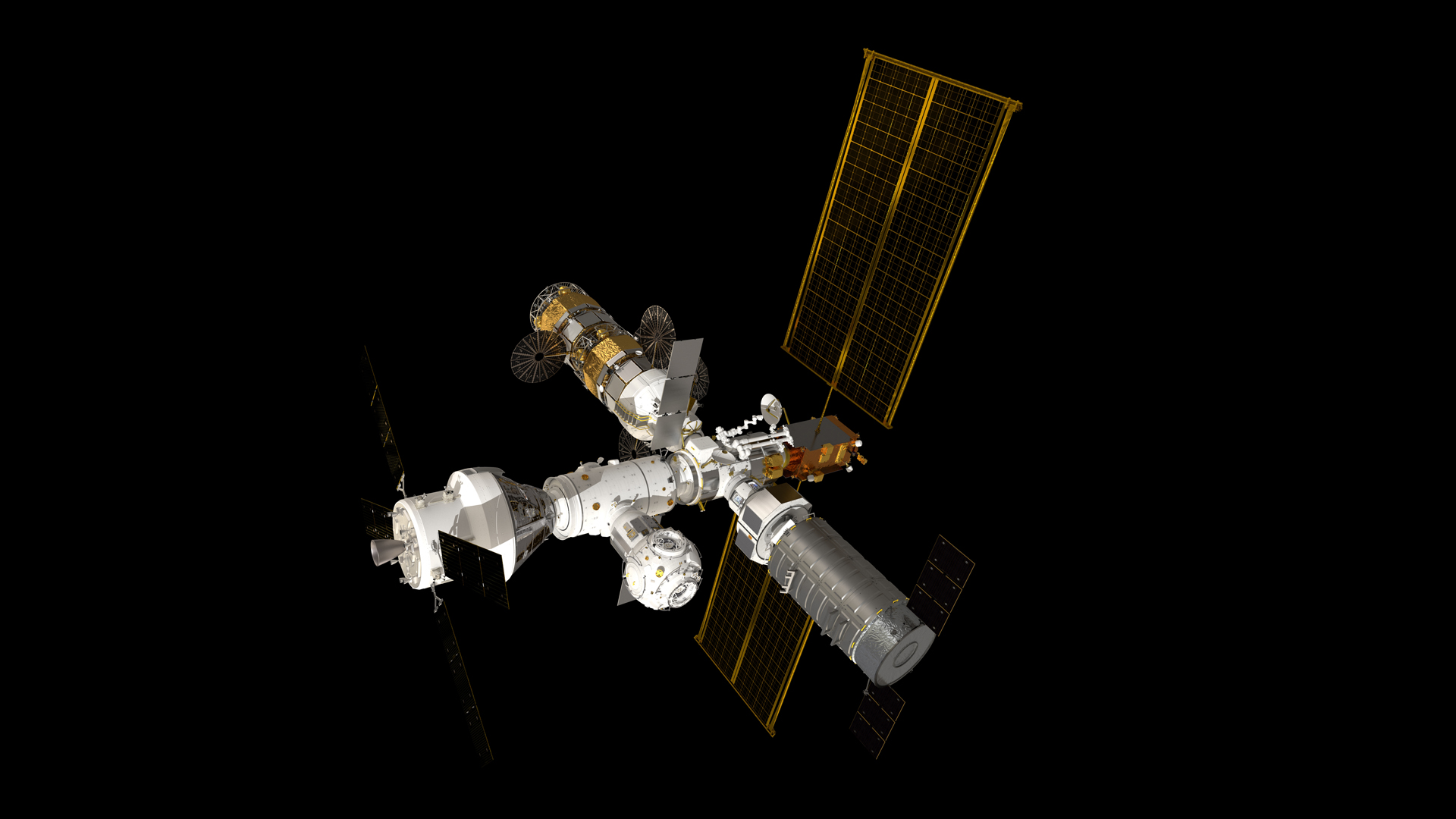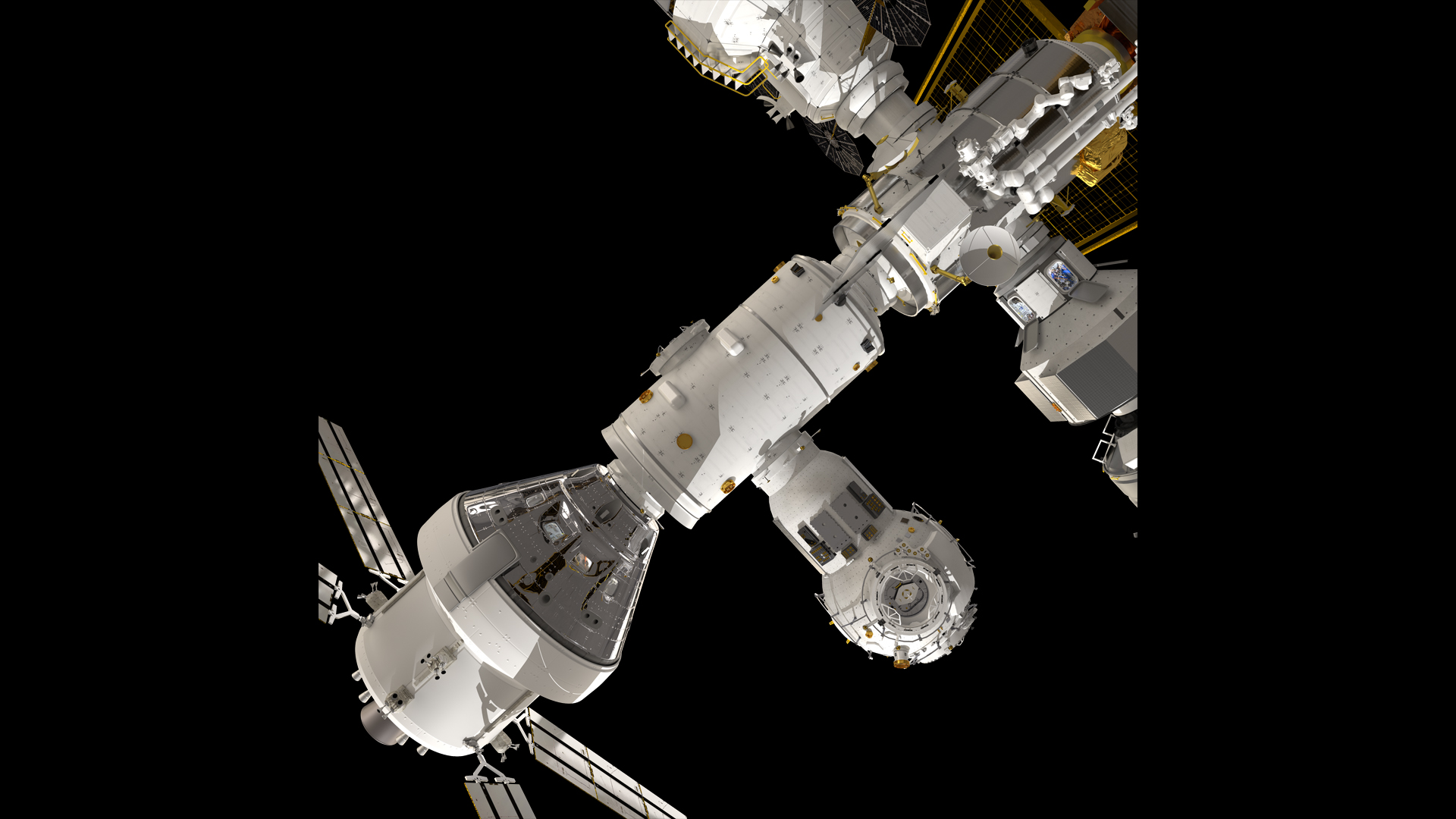NASA's moon-orbiting space station will be claustrophobic, architect says
"It's essentially just a corridor, where you have to turn 90 degrees if you want to stretch out."

Living quarters of NASA's moon orbiting Gateway station will be so tiny that astronauts will not be able to stand upright inside, an architect involved in the station's design said.
NASA and its international partners plan to begin construction of the Gateway station in the moon's orbit in the next couple of years. When complete near the end of the decade, the space lab will be about one sixth of the size of the International Space Station (ISS), featuring two habitation modules that will force crew members to all but forgo personal space.
"The International Habitation module will have habitable space of about 8 cubic meters [280 cubic feet] and you will have to share it with three others," René Waclavicek, a space architect and design researcher at Austria-based LIQUIFER Space Systems, said at the Czech Space Week conference in Brno, the Czech Republic, on Nov. 30, 2022. "In other words, that would be a room 2 by 2 by 2 meters [6.6 by 6.6 by 6.6 feet]. And you are locked in there. There are other rooms but they are not bigger and there are not many of them."
Related: Watch NASA's next-generation lunar Gateway space station build up in concept video
Waclavicek was involved in the design phase of the Europe-built International Habitation module, or I-Hab, which is one of Gateway's two habitable elements, essentially bed rooms combined with lab space (the other being the Habitation and Logistics Outpost, HALO, developed by Northrop Grumman in the U.S.).
When working on the design, the architects had to bow down to practical demands dictated by the nature of the project, Waclavicek said. Their initial hopes for larger modules, offering a more generous volume of habitable space akin to that available at the International Space Station, had to be abandoned due to the impossibility of launching massive components to the moon.
"We started off in the first phase with a cylinder with outer dimensions similar to what we know from the ISS," Waclavicek said. "That's about 4.5 m [15 feet] in diameter and 6 m [20 feet] long. But due to mass restrictions, we had to shrink it down to 3 m [10 feet] in outer dimensions. And that left us with an interior cross section of only 1.2 m by 1.2 m [4 feet by 4 feet]. Most of the internal volume is consumed by machinery, so it's essentially just a corridor, where you have to turn 90 degrees if you want to stretch out."
Breaking space news, the latest updates on rocket launches, skywatching events and more!
The International Space Station, with its 7.2 by 7.2 feet-wide (2.2 by 2.2 m) interiors, where astronauts could even perform space gymnastics routines, offers a luxury experience compared to what awaits moon explorers on Gateway.
"[The I-Hab] really is just a cylinder with a hatch on each end and two hatches at the sides and a corridor going through the length axis," Waclavicek said. "Even if you want to pass one another, it's already quite difficult, you have to interrupt whatever you are doing in the moment to let the other fellow pass by you."
Somehow, the architects managed to incorporate about 53 cubic feet (1.5 cubic m) of private space protected by closing doors for each crew member living inside the i-Hab. But the experience of staying aboard the Gateway will be challenging for more reasons than the cramped living quarters alone. As Waclavicek said, most of the module will be occupied by noisy and vibrating life-support technology, the constant hum of which will likely badly grate on the nerves of most mere mortals.
"Actually, you are living in a machine room," Waclavicek said. "The life-support systems make noise, they have a lot of fans, and you have only 1.5 cubic m of private space where you can close the door and tame the noise."
The architects explored ways to ease the pressure on the crew and make the experience of staying aboard the Gateway more enjoyable, but they kept hitting technical limits, including those of launch vehicles available to send the module to its destination.
"We always get asked "where is the window?" Waclavicek said. "At the International Space Station, the most popular place where astronauts spend every free minute is the window. But there are technical problems associated with it. The moon is a thousand times farther away [than the ISS] and each window is a disturbance in the continuity of the structure. Also, glass is very heavy so a window is the first thing that gets canceled."
There will, however, be smaller windows on the Gateway, located in the refueling module ESPRIT, which will also be built in Europe.
While the American HALO module may be launched as early as 2024, I-Hab's journey to the moon is not expected before 2027. Currently, Waclawicek said, the team is working on the Critical Design Review, an important milestone before hardware manufacturing can commence, and has started building a real-size mockup for testing human interaction with the habitat environment.
Follow Tereza Pultarova on Twitter @TerezaPultarova. Follow us on Twitter @Spacedotcom and on Facebook.

Tereza is a London-based science and technology journalist, aspiring fiction writer and amateur gymnast. She worked as a reporter at the Engineering and Technology magazine, freelanced for a range of publications including Live Science, Space.com, Professional Engineering, Via Satellite and Space News and served as a maternity cover science editor at the European Space Agency.

